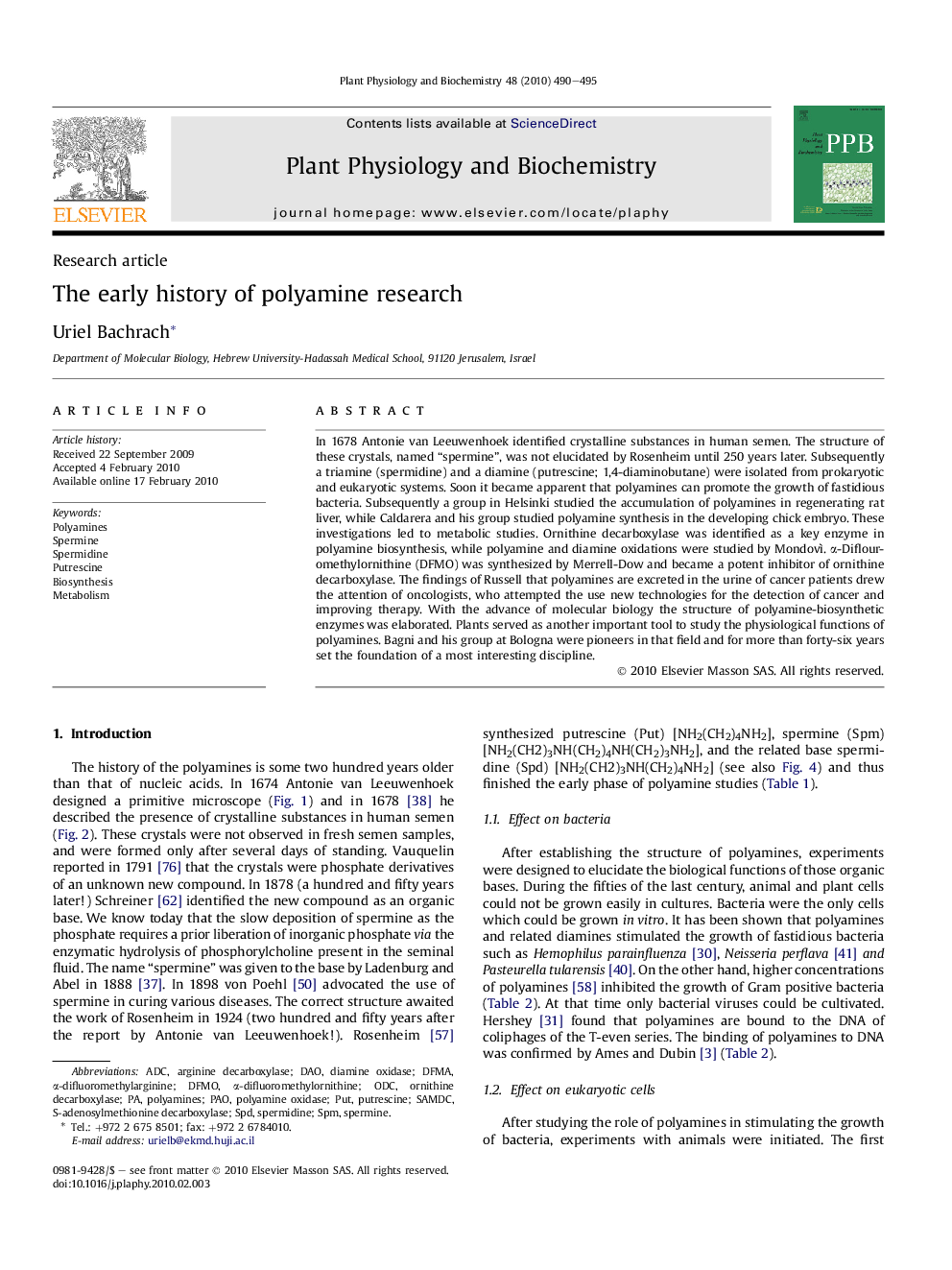| کد مقاله | کد نشریه | سال انتشار | مقاله انگلیسی | نسخه تمام متن |
|---|---|---|---|---|
| 2015361 | 1067557 | 2010 | 6 صفحه PDF | دانلود رایگان |

In 1678 Antonie van Leeuwenhoek identified crystalline substances in human semen. The structure of these crystals, named “spermine”, was not elucidated by Rosenheim until 250 years later. Subsequently a triamine (spermidine) and a diamine (putrescine; 1,4-diaminobutane) were isolated from prokaryotic and eukaryotic systems. Soon it became apparent that polyamines can promote the growth of fastidious bacteria. Subsequently a group in Helsinki studied the accumulation of polyamines in regenerating rat liver, while Caldarera and his group studied polyamine synthesis in the developing chick embryo. These investigations led to metabolic studies. Ornithine decarboxylase was identified as a key enzyme in polyamine biosynthesis, while polyamine and diamine oxidations were studied by Mondovì. α-Diflouromethylornithine (DFMO) was synthesized by Merrell-Dow and became a potent inhibitor of ornithine decarboxylase. The findings of Russell that polyamines are excreted in the urine of cancer patients drew the attention of oncologists, who attempted the use new technologies for the detection of cancer and improving therapy. With the advance of molecular biology the structure of polyamine-biosynthetic enzymes was elaborated. Plants served as another important tool to study the physiological functions of polyamines. Bagni and his group at Bologna were pioneers in that field and for more than forty-six years set the foundation of a most interesting discipline.
Journal: Plant Physiology and Biochemistry - Volume 48, Issue 7, July 2010, Pages 490–495